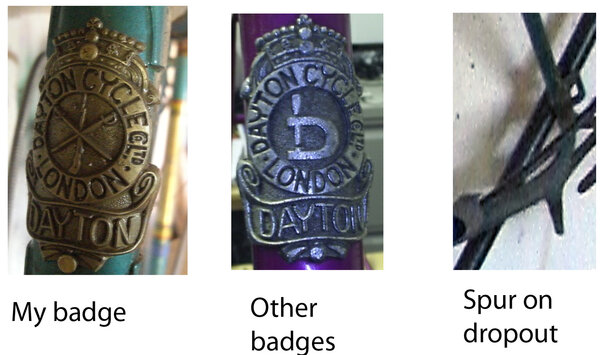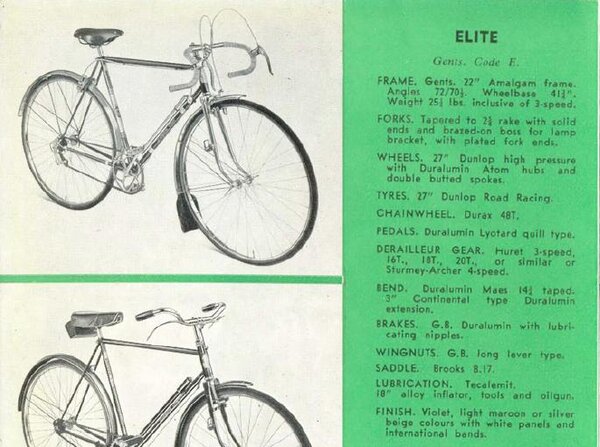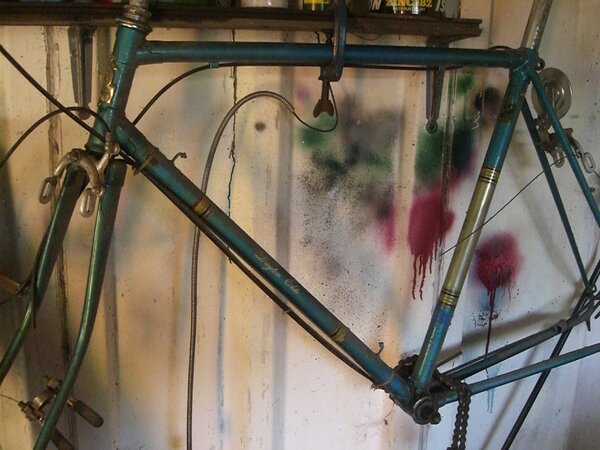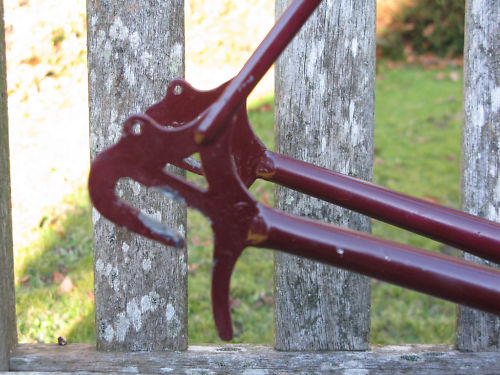I have a Dayton Elite, which I did up when I was at uni 1980's. The frame is double butted 531, and the forks are also 531. It was originally designed for 26" wheels not 27". I have found some people on the web with Dayton Elites but there are a few differences which I think may help date it.
I am certain of the make, model and frame material because when I started all the original transfers were present, it was the DB531 frame forks and stays transfer that made me think about doing it up. When the frame was stripped the tubes actually had some manufacturers detail' I cant remember exactly' but it confirmed Reynolds 531.
The frame had a distinctive Dayton transfer on the seat tube with a micrometer forming a D for Dayton. and the badge on the head says Daton Cycle Co London, same as all the others I have seen, BUT
on all the others the centre of the badge is again this Micrometer D, mine has what appers to be crossed swords and a rifle.
Also looking at the photos I have just taken the rear dropouts are an unusual design with a noticeable 'spur' sticking down.
Hopefully the attached photo may assist. Any information greatly appreciated
Chris
I am certain of the make, model and frame material because when I started all the original transfers were present, it was the DB531 frame forks and stays transfer that made me think about doing it up. When the frame was stripped the tubes actually had some manufacturers detail' I cant remember exactly' but it confirmed Reynolds 531.
The frame had a distinctive Dayton transfer on the seat tube with a micrometer forming a D for Dayton. and the badge on the head says Daton Cycle Co London, same as all the others I have seen, BUT
on all the others the centre of the badge is again this Micrometer D, mine has what appers to be crossed swords and a rifle.
Also looking at the photos I have just taken the rear dropouts are an unusual design with a noticeable 'spur' sticking down.
Hopefully the attached photo may assist. Any information greatly appreciated
Chris



